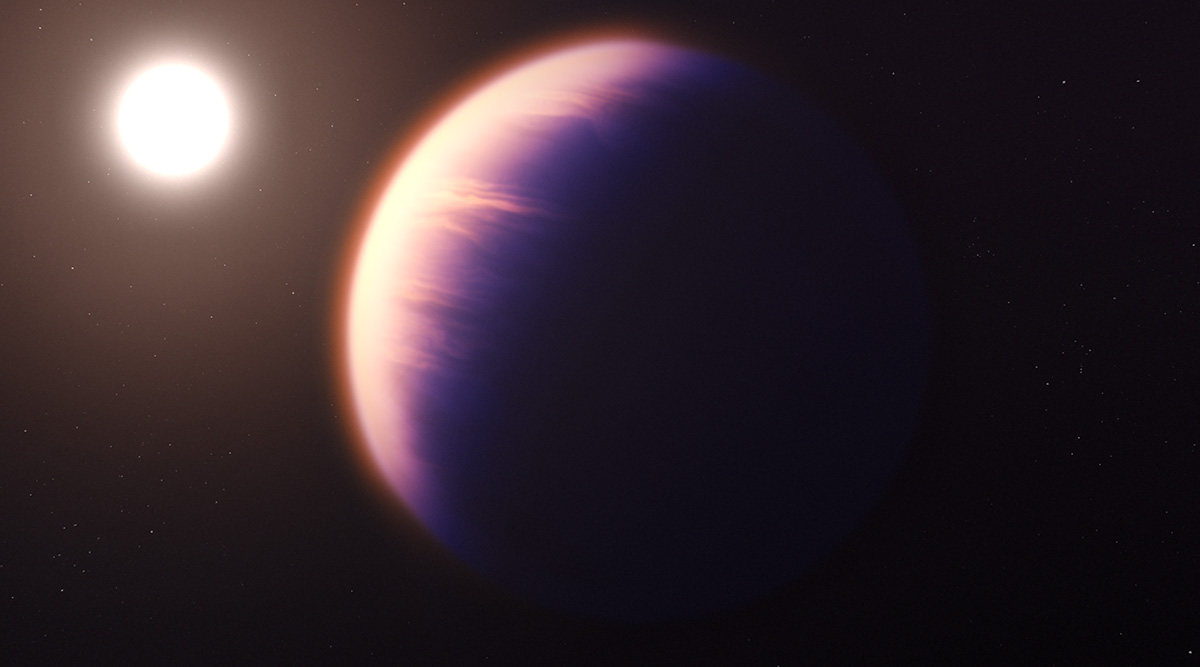 This illustration shows what exoplanet WASP-39 b could look like, based on current understanding of the planet. Because it is so close to its star, WASP-39 b is very hot and is likely to be tidally locked, with one side facing the star at all times. (Image credit: NASA, ESA, CSA, and J. Olmsted (STScI))
This illustration shows what exoplanet WASP-39 b could look like, based on current understanding of the planet. Because it is so close to its star, WASP-39 b is very hot and is likely to be tidally locked, with one side facing the star at all times. (Image credit: NASA, ESA, CSA, and J. Olmsted (STScI)) NASA’s James Webb Space Telescope has captured the first-ever clear evidence of the presence of carbon dioxide in a distant planet’s atmosphere. The planet named WASP-39b is orbiting a Sun-like star and is around 700 light years away from us and was originally discovered back in 2011.
The latest discovery gives insights into the planet’s composition and findings from the study were published in the Nature science journal. Previously, NASA’s Hubble and Spitzer space telescopes have revealed the presence of water vapour, sodium, and potassium in the planet’s atmosphere.
According to NASA, WASP-39b is a hot gas giant similar to Jupiter in our solar system. But its mass is the same as that of Saturn, and it has a diameter 1.3 times greater than Jupiter’s. NASA notes that this is an extremely hot planet with temperatures of around 900 degrees Celsius, which also contributes to its puffiness. It orbits its star very closely, and it completes one revolution around its sun in just four Earth days. So yes, four days would be one a year on this particular planet.
So why does the presence of carbon dioxide on a distant exoplanet matter?
Subscriber Only Stories
The discovery helps NASA understand the origin of the planet and its composition better. It also helps scientists understand how much solid versus gaseous material was used to form the planet. NASA says the WASP-39 b is an ideal target for transmission spectroscopy and they used the Webb’s Near-Infrared Spectrograph (NIRSpec) for their observations.
“As soon as the data appeared on my screen, the whopping carbon dioxide feature grabbed me,” said Zafar Rustamkulov, a graduate student at Johns Hopkins University and member of the JWST Transiting Exoplanet Community Early Release Science team, which undertook this investigation said in a press statement. “It was a special moment, crossing an important threshold in exoplanet sciences.”
“Detecting such a clear signal of carbon dioxide on WASP-39 b bodes well for the detection of atmospheres on smaller, terrestrial-sized planets,” Natalie Batalha of the University of California at Santa Cruz, who leads the team, said.